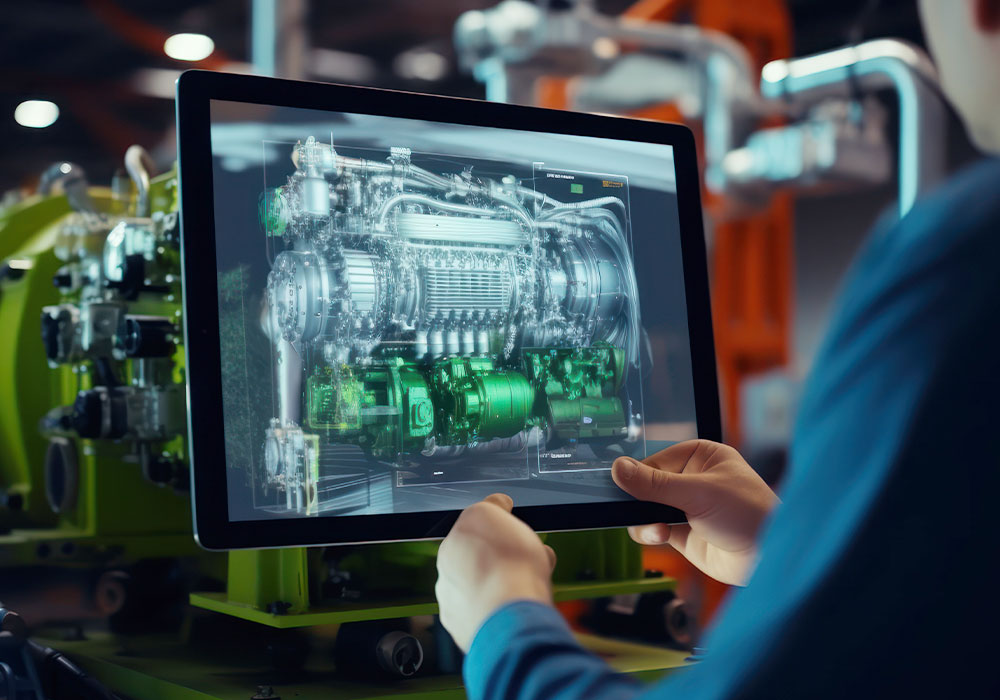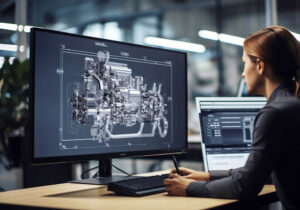
In the field of engineering, where maximising efficiency, durability, and performance is essential, optimising gearbox design emerges as a pivotal pursuit. Gearboxes serve as the vital component in numerous mechanical systems, transmitting power from a prime mover to various output devices. Whether it is in automotive, aerospace, industrial machinery, or renewable energy applications, the optimisation of gearbox design plays a pivotal role in enhancing overall system efficiency and reliability.
Advanced methodologies and algorithms have revolutionised the process of gearbox design optimisation, allowing engineers to fine-tune every aspect of gearbox performance. By leveraging computational tools and innovative approaches, engineers can navigate the complex interplay of factors influencing gearbox operation, from tooth profile design to material selection and lubrication strategies.
Optimisation in gearbox design involves finding the most efficient configuration that meets specified performance criteria while considering constraints such as space limitations, weight restrictions, and cost considerations. It’s a multidimensional problem that requires balancing conflicting objectives and exploring a vast design space.
Efficiency: Optimising gearbox efficiency involves minimising energy losses during power transmission. This includes reducing frictional losses, minimising wear, and maximising power throughout. Efficient gear design minimises the energy dissipated as heat, resulting in improved overall system efficiency and reduced operating costs.
Durability: Durability is essential for ensuring the longevity and reliability of gearboxes, specifically in demanding operating conditions. Optimisation techniques aim to enhance component strength, mitigate stress concentrations, and minimise fatigue failure risks. By simulating various load scenarios and material properties, engineers can design gearboxes capable of withstanding prolonged operation without premature failure.
Performance: Performance optimisation encompasses a range of factors, including torque capacity, speed range, noise and vibration levels, and dynamic response. Advanced algorithms enable engineers to repeatedly refine gearbox designs, and fine-tune parameters for achieving optimal performance characteristics. This may involve optimising gear ratios, tooth profiles, and bearing arrangements to meet specific application requirements.
Multidisciplinary Design Optimisation (MDO): MDO integrates multiple engineering disciplines, such as structural analysis, fluid dynamics, and tribology, into a unified optimisation framework. By considering the coupled effects of various subsystems, MDO facilitates holistic gearbox design optimisation, leading to superior performance and efficiency.
Topology Optimisation: Topology optimisation is a powerful tool for exploring unconventional design configurations by iteratively removing material from a design space while maintaining structural integrity and desired performance criteria. In gearbox design, topology optimisation can help identify innovative gear arrangements and load-bearing structures, leading to lightweight yet robust designs.
Finite Element Analysis (FEA): FEA enables engineers to simulate the structural behaviour of gearbox components under various loading conditions. By analysing stress distributions, deformation patterns, and failure modes, FEA provides valuable insights into design weaknesses and opportunities for optimisation. It allows engineers to optimise gear geometries, tooth profiles, and material selections for enhanced durability and performance.
Computational Fluid Dynamics (CFD): CFD plays a crucial role in optimising gearbox lubrication systems and cooling mechanisms. By simulating fluid flow patterns, heat transfer rates, and pressure distributions within the gearbox, CFD helps engineers optimise oil flow paths, baffle configurations, and cooling channels to minimise frictional losses and maintain optimal operating temperatures.
Genetic Algorithms and Machine Learning: Genetic algorithms and machine learning techniques offer innovative approaches to gearbox design optimisation by mimicking evolutionary processes and learning from data. These algorithms can explore vast design spaces, identify potential design configurations, and adaptively refine solutions based on performance feedback, hence leading to highly efficient and robust gearbox designs.
While advanced methodologies and algorithms have significantly advanced gearbox design optimisation, several challenges remain. These include accurately modelling complex nonlinear behaviours, integrating real-world uncertainties into the optimisation process, and managing computational complexity.
Future research directions in gearbox design optimisation may involve the development of hybrid optimisation techniques combining physics-based models with data-driven approaches, the integration of advanced materials and manufacturing technologies, and the exploration of bio-inspired design principles for enhanced efficiency and sustainability.

Therefore, gearbox design optimisation stands at the intersection of engineering innovation and computational science, offering professionals the tools and techniques to create high-performance, durable, and efficient mechanical systems. By embracing advanced methodologies and algorithms, engineering professionals can unlock new possibilities in gearbox design, driving progress across a wide range of industries and applications.